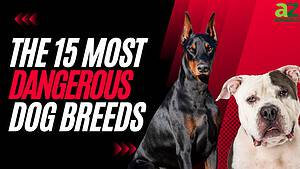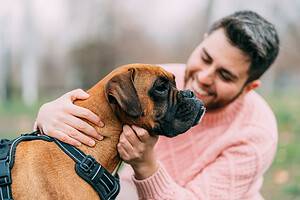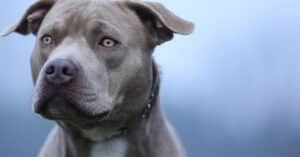Preparing to bring home an Australian shepherd puppy? Check out our guide to learn all about Australian shepherd progression, including the importance of forming a secure, supportive bond with your pup.
Read on to learn more.
Australian Shepherd: Breed Summary
The story of the Australian shepherd’s development is not a simple or straightforward one. To start with, this lovely breed didn’t originate in Australia. Instead, this herding breed seems to have most of its ancestry in the isles of the UK alongside other intelligent, agile herding dogs such as the border collie. But their roots may not only reside there, as some historical accounts suggest that genetic lines from the Basque region of Spain and Germany may also have contributed to the creation of the breed we know today as the Australian shepherd.
Through the brutal onslaught of colonization, Europeans populated Australia and others pushed westward across North America. Some of these people were sheepherders, bringing their herding dogs along with them as they moved their sheep. To back up the claim of the Australian shepherd’s ancestry mostly residing in the UK, a 2017 study on the canine genome found that the Australian shepherd belongs to the UK Rural clade of dogs.
Australian Shepherd Progression: Some Attributes
While genetic research does support that some characteristics can be linked to certain breeds, this genetic connection does not guarantee an individual dog’s personality or portray the whole story of that individual.
Instead, evolutionary history and genetics are an important part of that story alongside other contributing factors of behavioral expression. These other factors include the maternal relationship that the pup may have had in infancy, how safe the dog feels in their daily life, the type of attachment bond created between the pup and primary human caregiver, the health of the dog, their learning environment, their social environment, if and how their species-specific and individual needs are met, etc.
With the above said, people familiar with Australian shepherds often describe them as highly intelligent, interested in learning, active, and easily bored and distressed without enough mental, physical, and social enrichment.
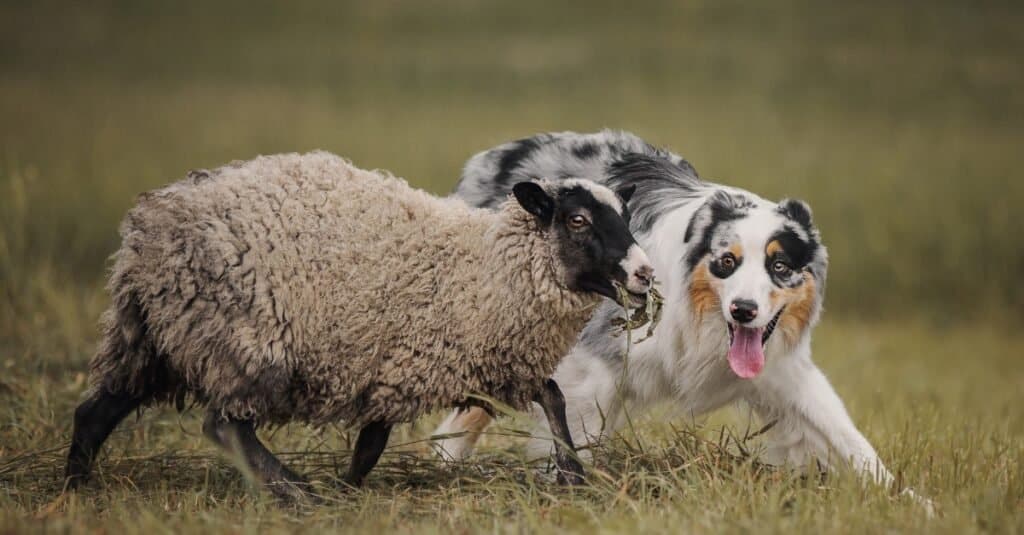
Australian shepherds are well-known for their herding capabilities.
©iStock.com/Julia_Siomuha
Australian Shepherd Progression: Growth Chart
In this guide, we’ll focus on the standard Australian shepherd, as opposed to the miniature variety. Below is our growth chart from 2 months to 18 months for healthy male and female Australian shepherds. Please note that natural variation is normal and that this is simply a guide.
| Age | Female Australian Shepherd Weight | Male Australian Shepherd Weight |
|---|---|---|
| 2 Months | 4-9 lbs. | 7-10 lbs. |
| 3 Months | 13-18 lbs. | 16-20 lbs. |
| 4 Months | 18-25 lbs. | 21-30 lbs. |
| 5 Months | 23-30 lbs. | 29-40 lbs. |
| 6 Months | 26-35 lbs. | 35-48 lbs. |
| 7 Months | 29-39 lbs. | 43-54 lbs. |
| 8 Months | 32-47 lbs. | 46-57 lbs. |
| 9 Months | 34-49 lbs. | 47-58 lbs. |
| 10 Months | 36-50 lbs. | 48-59 lbs. |
| 11 Months | 37-51 lbs. | 49-60 lbs. |
| 12 Months | 38-52 lbs. | 50-61 lbs. |
| 18 Months | 40-55 lbs. | 50-65 lbs. |
When Will My Australian Shepherd Stop Growing?
As a medium-sized breed, the Australian shepherd typically reaches their maximum size and weight at 16-18 months old. You will note that they usually reach their maximum height at 12 months old and continue filling out until 16-18 months.
To ensure that your Australian shepherd puppy is properly developing, it’s best to schedule regular developmental checkups with your vet at the 2,4,6,9,12, and 18-month mark.
Always make sure to provide constant access to fresh water for your developing and fully-grown pup.
Australian Shepherd Progression: How Big Will My Australian Shepherd Be When It’s Fully Grown?
A healthy female Australian shepherd should reach about 40-55 pounds when fully grown and stand 18-21 inches tall at the withers. For a healthy male Australian shepherd, you’ll find that they typically grow 50-65 pounds and stand 20-23 inches tall at the withers.
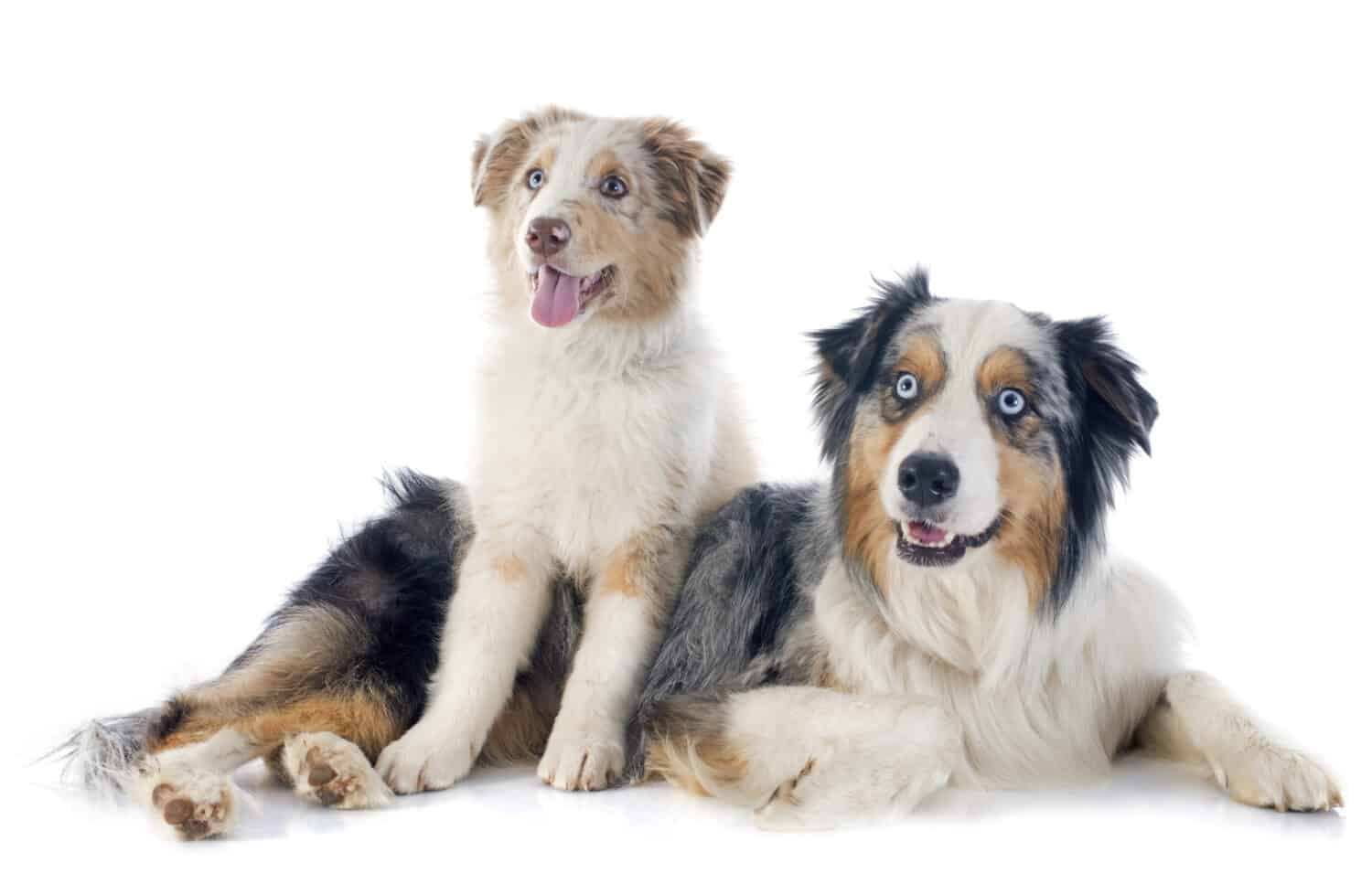
You can expect your Australian shepherd to reach their full height and weight by 16-18 months old.
©cynoclub/Shutterstock.com
When Should My Australian Shepherd Be Spayed or Neutered?
Deciding when or if to spay or neuter your dog can be a complex question. There can be risks associated with keeping a dog intact and risks associated with altering it, so it’s important to consider what’s best for your specific dog. Additionally, responsible and empathetic dog guardians should also think about the crisis dogs in shelters and unwanted or stray pups face in countries such as the US where about 400,000 shelter dogs are euthanized every year. If you do decide to leave your dog intact, please be responsible and don’t allow your pup to breed as this will only contribute to the crisis shelter pups endure.
Some breeds, such as boxers, face a higher rate of certain cancers when altered, so it’s important to know the risks specific breeds may face and at what age ranges. According to a study that included 35 breeds, Australian shepherds do not face a significantly increased risk of developing cancers or joint diseases when altered under 2 years of age. However, spaying females between 2-8 years of age may be associated with an increased risk of developing some cancers. As such, your vet may opt to spay a female Australian shepherd before she reaches 2 years old.
Australian Shepherd: When Should I Potty Train My Australian Shepherd?
You can begin gently potty training your Australian Shepherd puppy at 8 weeks of age. However, it’s crucial to understand that pups at this age can only hold their bowels and bladder for about 2 hours. So, if you want to help teach your puppy to go to the bathroom outside, make sure to bring them outside before this 2-hour mark. You should focus on building wonderful associations with going outside so your pup feels safe, confident, and supported.
Using puppy pads at night indoors will alleviate the need to bring them outside every 2 hours at night. If you keep them in a puppy pen at night, it’s important to create ample space between their cozy bed setup and the puppy pads. You may find that some people will recommend keeping the space small to try to force your puppy to hold it longer as they won’t want to go to the bathroom where they sleep. This is a cruel suggestion and doesn’t reflect the biological reality of how long they can actually hold it.
If They Have an Accident Indoors
If your Australian shepherd puppy has an accident indoors, it’s imperative to never punish them in any way. This punishment won’t teach your pup what you’d actually like them to do and may teach them that you’re someone to fear and avoid. This can also lead to them hiding where they go inside as they won’t feel safe around you. Remember, the most important part of raising a puppy is establishing a secure attachment bond and showing your pup that you are consistently a secure base of support and care.
Australian Shepherd Progression: When Should They Stop Eating Puppy Food?
You can begin transitioning your Australian shepherd from puppy food to adult food around 9-12 months of age. Confirm with your vet the exact time, but this is the average time frame for this breed. It’s important to not transition to adult food too early as puppy food is formulated to provide for the specific needs of a growing pup.
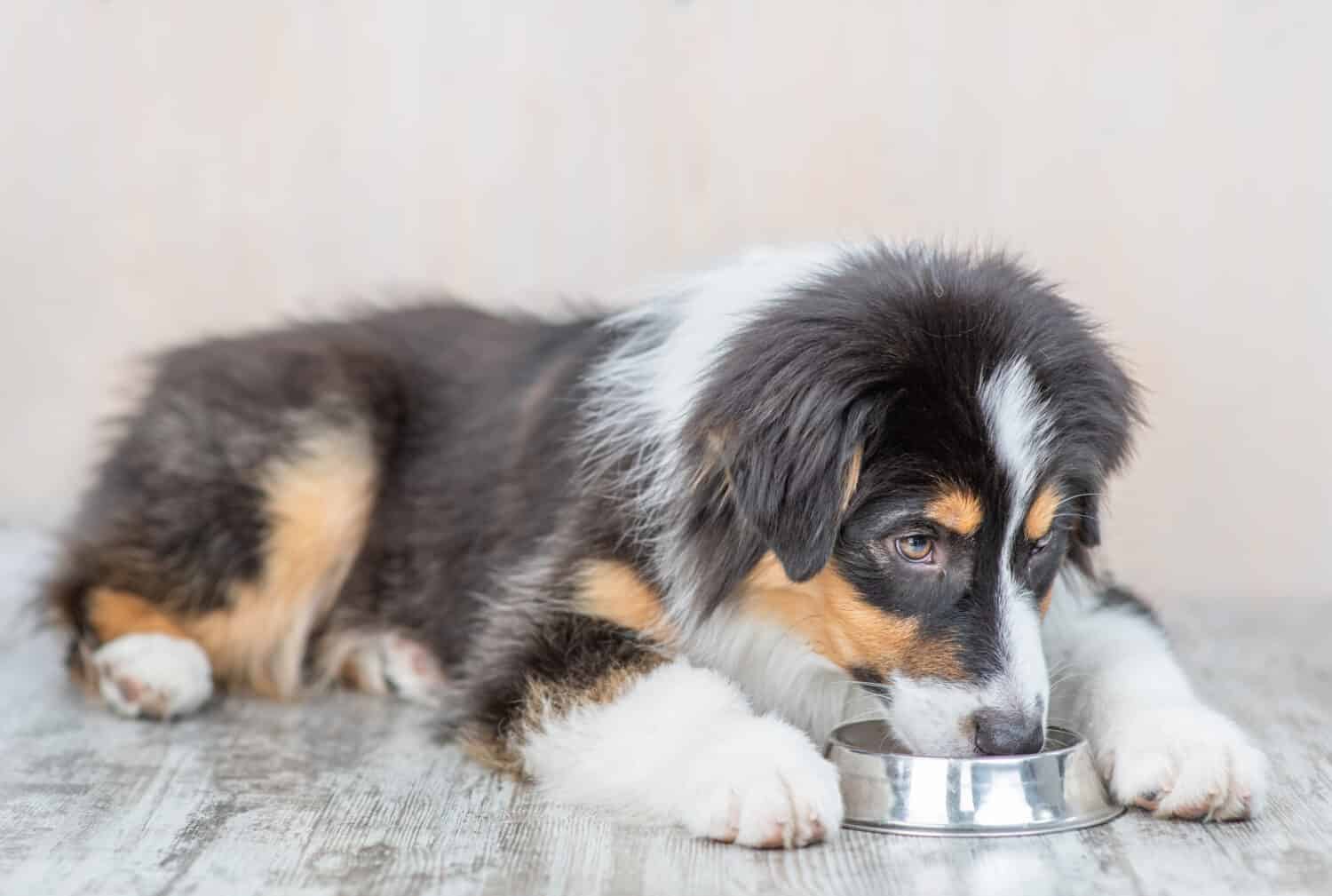
You can begin transitioning your Australian Shepherd pup to adult food around 9-12 months of age.
©Ermolaev Alexander/Shutterstock.com
When Will My Australian Shepherd Start Losing Teeth?
You can expect your Australian shepherd to start losing their set of 28 puppy teeth at about 12 weeks old. At this point, your pup’s set of 42 adult teeth will start coming in. This process can be quite uncomfortable for your puppy, so make sure to provide lots of chew toys to help soothe their sore gums. Frozen vegetables such as carrots can also be a great option.
Try to have these toys available in every room of the house that your puppy has access to. This will help prevent them from chewing inappropriate items. If you do find your pup chewing on something they shouldn’t, simply trade them for an equally good or better appropriate option, such as a chewy treat or toy. Trading rather than simply taking is crucial to helping your puppy feel safe around you and can help prevent the development of habitual resource guarding towards you.
Australian Shepherd Progression: When Should I Start Training?
While teaching your pup life skills they need to thrive in a human-centered world is important, the role of teaching cues and skills is often overemphasized for puppies. You can start teaching your pup at 8 weeks old, but emphasizing training is like only looking at genetics as a factor in the personality of your pup. It’s just as crucial to facilitate forming that oh-so-important secure attachment bond between you and your puppy, support healthy development with proper food and sleep, and provide them ample opportunity for safe, positive early socialization experiences.
Forming this secure attachment bond will also reduce the risk of your pup suffering from separation anxiety and other issues associated with insecure attachment.
Early Socialization Period
The early socialization period for dogs is between 3-12 weeks of age. At this time, their brain is primed for learning about novel experiences. So, if you bring home a rescued Australian shepherd at 8 weeks of age, it’s imperative to begin the process of positively, gently, and supportively introducing them to novel experiences. This can include social processing at a park, making new animal friends, meeting new people, and experiencing new scents, sights, sounds, tastes, and textures.
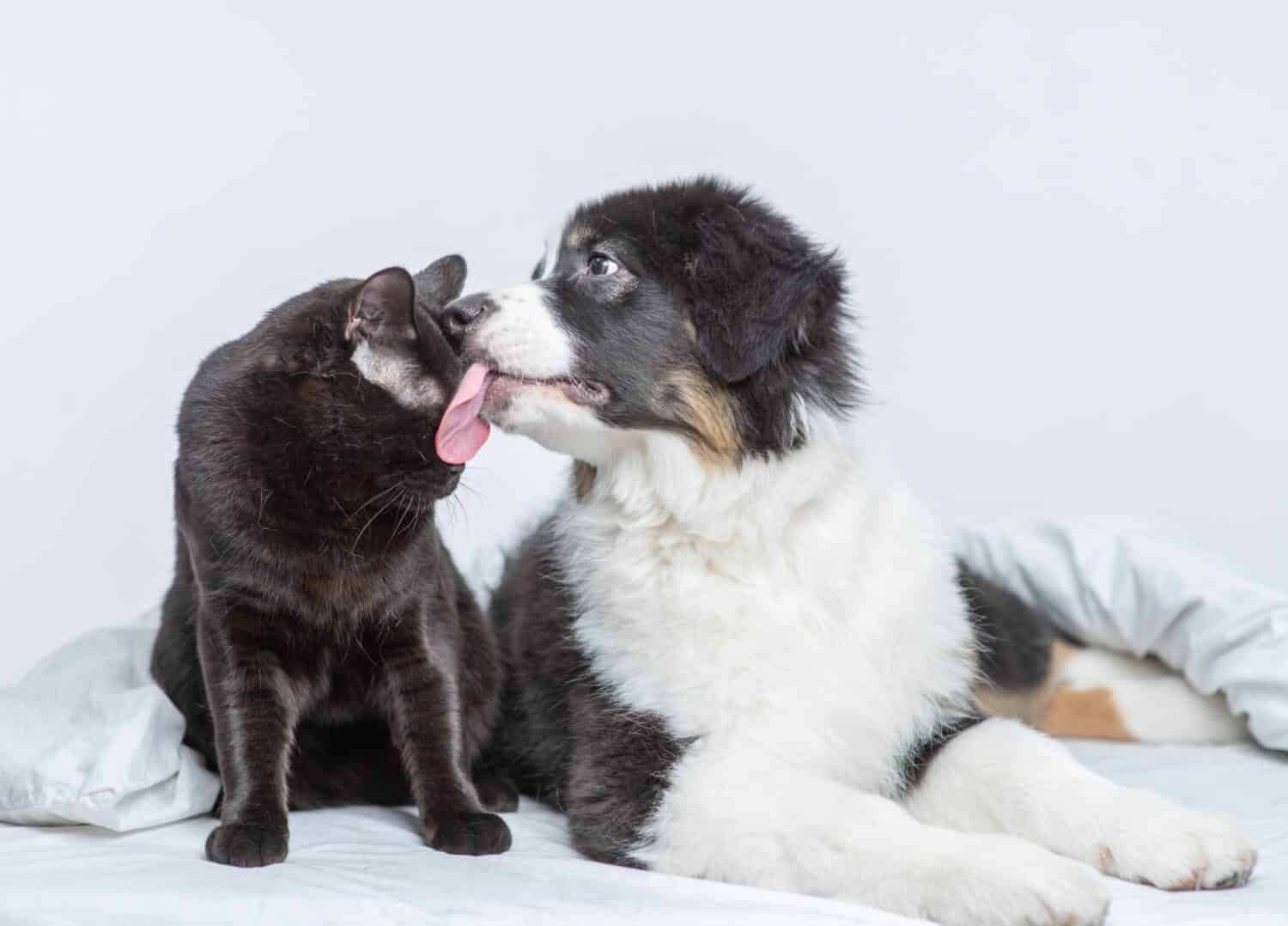
It’s important to facilitate positive new experiences and interactions for your Australian shepherd puppy during the early socialization period.
©Ermolaev Alexander/Shutterstock.com
What Cues Should I Teach My Australian Shepherd First?
Alongside early socialization experiences and facilitating this secure attachment bond, you can also teach your pup some cues using positive reinforcement. Positive reinforcement uses rewards to increase the likelihood of a desired behavior happening again. To be actually reinforcing, these rewards need to be motivating for your individual dog. Common positive reinforcers include treats, high-valued toys, play, etc.
Please note that you can inadvertently mask behavioral symptoms or coerce your dog into performing behaviors simply to gain the reinforcer even if they feel unsafe or uncomfortable with a task or environment.
Positive reinforcement should never be a replacement for building and maintaining a secure attachment bond and shouldn’t be used to suppress behaviors that are actually our pups trying to express discomfort, pain, fear, an illness, need for space or connection, trauma, hyperarousal, etc. For behavioral symptoms, it’s always best to consult with a force and fear-free certified behaviorist or veterinary behaviorist.
Cues to Teach Your Australian Shepherd Puppy
Note that we use the word “cues” rather than “commands” as learning should be cooperative and voluntary, not performed under threat or coercion.
With that being said, one of the first cues you can teach your pup is “come”. Pairing having your pup come to you with cuddles, play, a treat, toys, etc., will build a strong association that coming to you when called is a wonderful thing. If you find that your puppy is consistently hesitant to come when called, this can be a good chance to re-evaluate your relationship and see how you can build a stronger bond in which coming to you when called is not only externally motivating (with rewards) but also intrinsically motivating (because they just want to be with you!).
Other cues you can teach your Australian shepherd puppy include:
- “Go to place” or “go to mat”. This is a great skill for teaching your puppy to settle on a specific spot when out at a café, for example. They can settle on the mat and, then you can give them a wonderful chew toy or snack to occupy themselves.
- “Find it”. Teaching “find it” involves saying this cue and then tossing a treat for your puppy to find. Start out by tossing the treat only a couple of inches away, increasing the distance as your pup succeeds. This cue helps increase your pup’s cognitive abilities, encourages sniffing which lowers stress levels, and is great for redirecting your puppy’s attention when needed.
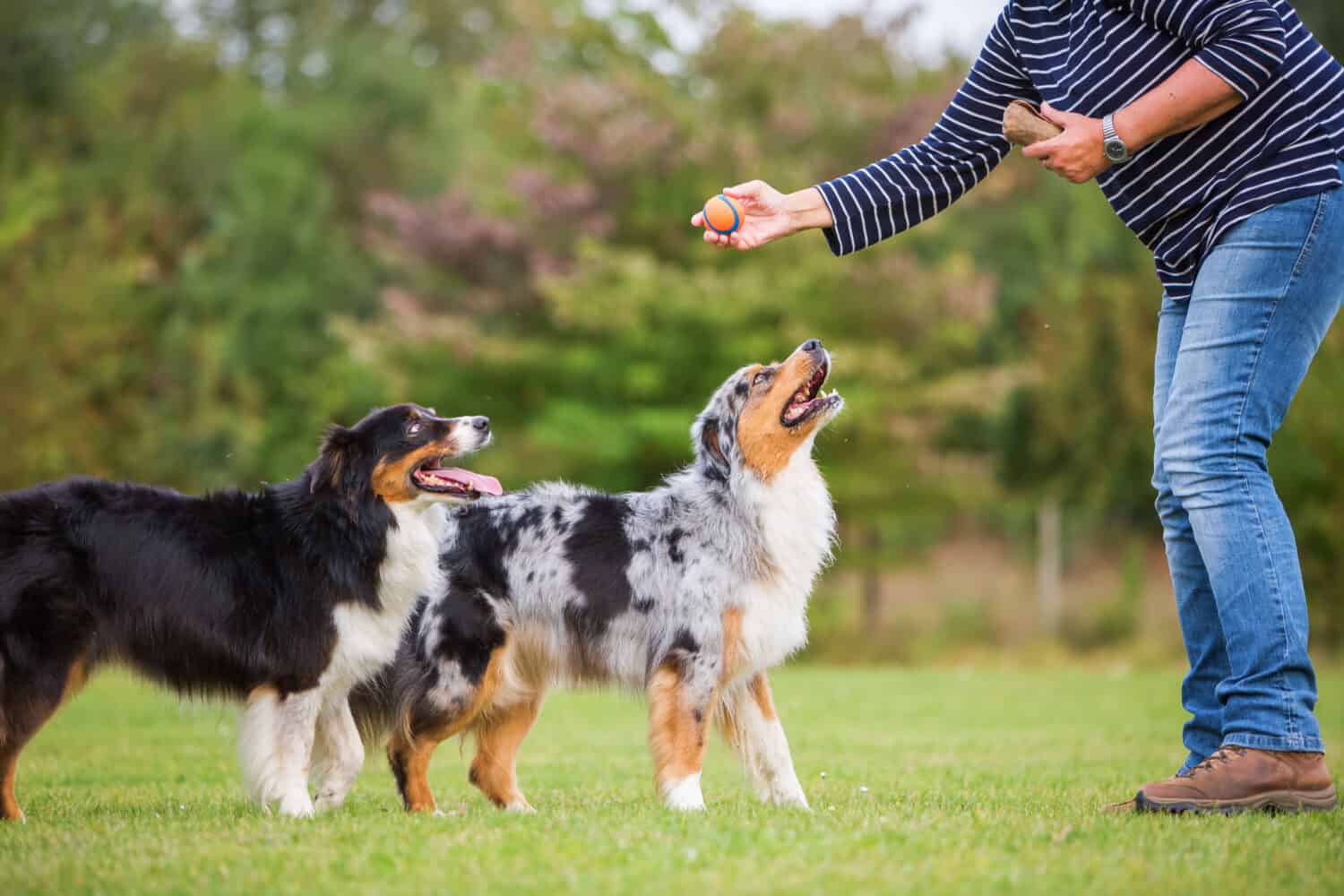
Toys can be an excellent positive reinforcer for dogs who love to play.
©Christian Mueller/Shutterstock.com
Australian Shepherd Progression: When Will They Calm Down?
Your Australian shepherd will likely reach social maturity around 3 years of age. At this point, you may notice that your canine companion settles a bit easier and is less rambunctious. However, and this is a huge caveat, if your pup, especially breeds like Australian shepherds, does not consistently have their needs for social, physical, and mental enrichment met, they may very well exhibit signs of frustration, hyperexcitability, difficulty settling, and even concerning repetitive behaviors (such as tail chasing).
While you can teach cues that may encourage your dog to look or act calm, this state is only truly achieved through a calm, content internal environment. Essentially, the pup should actually feel calm because their human caregiver consistently meets the dog’s needs.
Common Health Issues Your Australian Shepherd Might Experience
There are a few health issues that Australian shepherds are prone to experiencing. Careless breeding can greatly increase the risks of these health issues. These health concerns include:
- Multi resistance 1 (MDR1)-related drug sensitivity.
- Eye conditions such as cataracts
- Hypothyroidism
- Idiopathic epilepsy
- Hip dysplasia
- Partial or complete hearing and vision impairments in double merle Aussies.
Irresponsible breeding practices increase the risks of your canine companion developing these conditions, especially congenital hearing and vision loss. If you insist on purchasing an Australian shepherd puppy from a breeder rather than rescuing it, it’s important to make sure the breeder is practicing the highest standards of care and can provide genetic health testing and proof of using enough genetic diversity. Of course, I always encourage folks to rescue instead. With some searching, you can certainly find pedigree and mixed-breed Australian shepherd puppies across shelters and rescues in need of loving homes.
Picture of an Adult Australian Shepherd
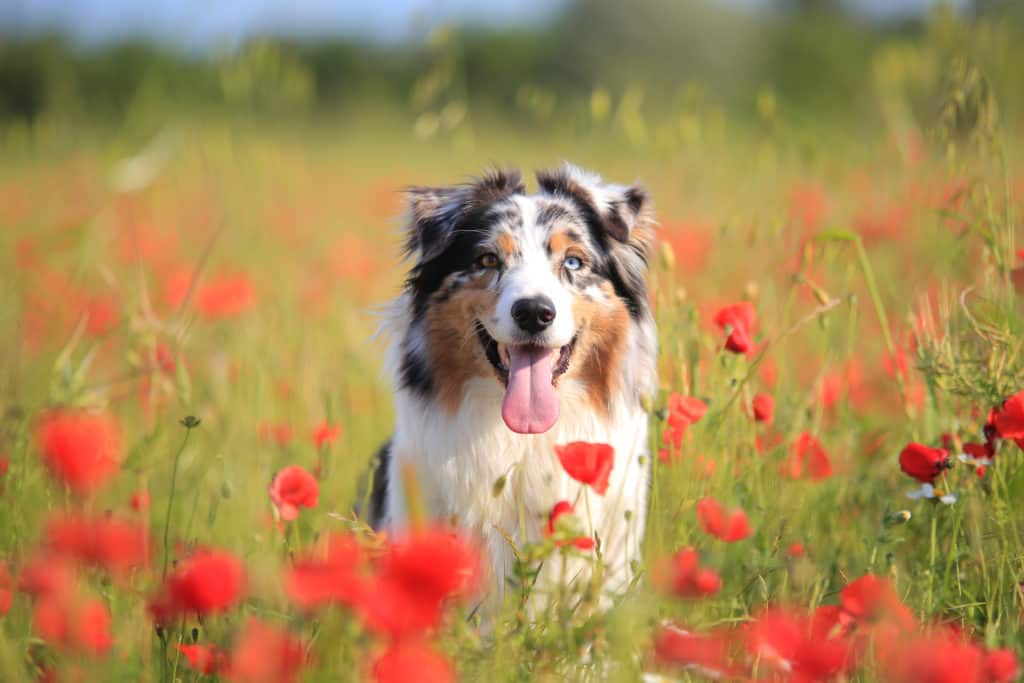
As a medium-sized breed, the Australian shepherd typically reaches their maximum size and weight at 16-18 months old.
©Melounix/Shutterstock.com
Picture of a 6-month-old Australian Shepherd
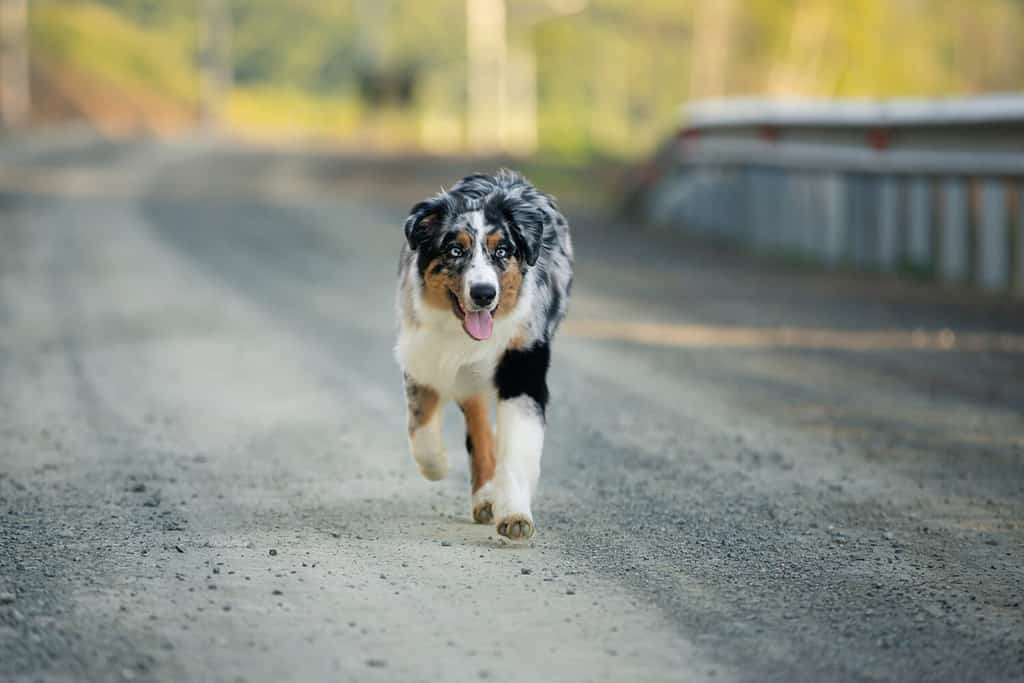
A cheerful 6-Month-Old Australian shepherd.
©Anastasiia Cherniavskaia/Shutterstock.com
Picture of an Australian Shepherd Puppy
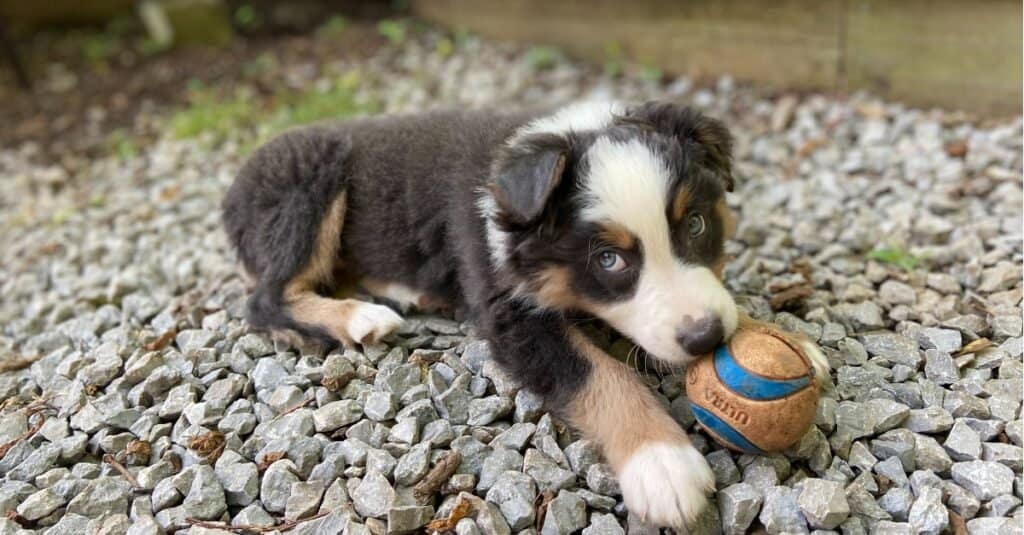
An adorable Australian shepherd puppy playing with a ball.
©iStock.com/Brad Covington
Are Australian Shepherds High Maintenance?
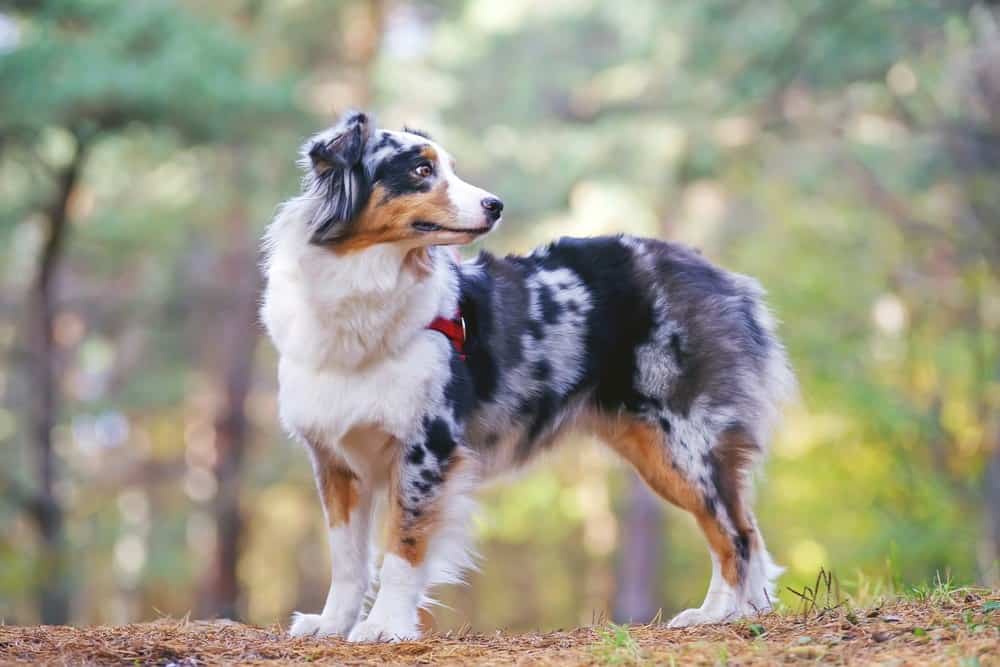
Australian shepherds are not known to be frequent barkers, although they may be rather vocal.
©Eudyptula/Shutterstock.com
Australian shepherds are an extremely high-energy breed and are thought to be one of the most high-maintenance dogs as well. While they have personalities that include excellent self-control, they are thought of as one with a rather high intellect and need frequent stimulation, both mentally and physically. Australian shepherds demand a lot of attention and require a generous amount of space to release their energy.
This shepherd needs not only extensive grooming but exercise as well, and they often have a higher need for human companionship. In addition to Australian shepherds needing a lot of exercise, they need additional training, although they are able to understand commands rather quickly, and with the correct owner, they will flourish. They can be an excellent choice for a family dog and are very loving but if you want a dog that is rather easy to care for, this is not the one for you.
The photo featured at the top of this post is © otsphoto/Shutterstock.com
Ready to discover the top 10 cutest dog breeds in the entire world?
How about the fastest dogs, the largest dogs and those that are -- quite frankly -- just the kindest dogs on the planet? Each day, AZ Animals sends out lists just like this to our thousands of email subscribers. And the best part? It's FREE. Join today by entering your email below.
Thank you for reading! Have some feedback for us? Contact the AZ Animals editorial team.



